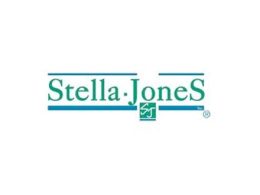by Scott Thiel, Blackrock
The European Central Bank and Federal Reserve have shifted toward more dovish stances. Scott examines the implications for our bond views.
A clear message from European Central Bank (ECB) President Mario Draghi last week kicked off a dovish shift by major central banks–from patience to inching toward more stimulus. We see the ECB and the Federal Reserve likely to ease soon. Yet while market expectations for ECB easing appear reasonable, expectations for the Fed seem excessive. We believe government bonds still are key stabilizers in strategic portfolios amid rising macro uncertainty, but we are turning cautious on long-term U.S. Treasuries in the short run.
[backc url='https://www.dynamic.ca/leadership/eng/active.html#pools?video=pools&utm_source=aa&utm_medium=edirect&utm_campaign=alwayson&utm_content=activepools_pools']Major central banks are turning more dovish to address inflation shortfalls and extend the expansion. In a speech, the ECB’s Draghi said rate cuts and other options were on the table to support the eurozone unless growth and inflation pick up soon. Asset prices immediately reflected the dovish tone. The front-end German bund yield dropped to an eye watering year-to-date low of -0.75% after the news. The prospect of an ECB going even more negative on rates and/or restarting quantitative easing has helped drag the share of developed market government bonds with negative yields back to 2016 highs. See the bottom right corner of the chart above. Also contributing: market expectations that other central banks, including the Bank of Japan, will ease later this year. The Fed left rates unchanged, but signaled it was closely monitoring if more stimulus may be warranted. The FOMC cut the word “patient” from its policy statement and eight participants signaled lower rates would be appropriate this year.
Take it easy
The dovish shift supports our view that the global expansion has room to run, albeit with moderating growth. We now see reduced risks of a recession and of overheating over the next two years. Yet we see rising trade and geopolitical tensions posing downside risks to growth expectations–and are debating the potential longer-term consequences of a reversal in the globalization trend, such as higher inflation.
The Fed and other central banks are now considering adopting so-called make-up strategies, such as average inflation targeting, to address inflation falling short of their targets, as we detailed in our recent Macro and market perspectives. Yet the shift in this direction has not been uniform. In his recent speech, Draghi seemed to signal the ECB’s willingness to put such strategies to work in the near term. The ECB out-doved the Fed relative to market expectations going into the week. We expect this trend will persist. We believe market expectations of U.S. policy easing have gone too far. Recent U.S. economic data outside manufacturing have been at trend. We see the Fed likely cutting rates in July as insurance against escalating trade conflicts, but failing to deliver on the four quarter-point rate cuts through 2020 markets are expecting. In contrast, Europe has long been facing structural challenges in getting inflation back to target. We see Draghi’s speech paving the way for further policy easing, meeting market expectations during the remainder of his term as central bank president.
Evolving bond views
Against this backdrop, we remain positive on risk assets and recognize that yields may fall further. We still believe government bonds are key for providing portfolio ballast over the longer term. Yet investors are no longer being compensated enough for duration risk in U.S. Treasuries, in our view, given that the market appears to be pricing in too much Fed easing. This is why we are becoming more cautious on long-term U.S. government bonds from a tactical perspective. We see Europe as a different story: The amount of easing priced into markets appears reasonable. We see an opportunity for U.S.-dollar based investors to add exposure to European government bonds. Yields look much more attractive after hedging back into U.S. dollars thanks to the hefty U.S.-euro interest rate differential. Negative rates are a challenge for eurozone investors, but a relatively steep yield curve is a plus.
In the light of these developments, we are in the process of reviewing our tactical asset allocation views and will release the full updates in our upcoming midyear outlook.
Scott Thiel is BlackRock’s chief fixed income strategist, and a member of the BlackRock Investment Institute. He is a regular contributor to The Blog.
Investing involves risks, including possible loss of principal.
This material is not intended to be relied upon as a forecast, research or investment advice, and is not a recommendation, offer or solicitation to buy or sell any securities or to adopt any investment strategy. The opinions expressed are as of June 2019 and may change as subsequent conditions vary. The information and opinions contained in this post are derived from proprietary and non-proprietary sources deemed by BlackRock to be reliable, are not necessarily all-inclusive and are not guaranteed as to accuracy. As such, no warranty of accuracy or reliability is given and no responsibility arising in any other way for errors and omissions (including responsibility to any person by reason of negligence) is accepted by BlackRock, its officers, employees or agents. This post may contain “forward-looking” information that is not purely historical in nature. Such information may include, among other things, projections and forecasts. There is no guarantee that any forecasts made will come to pass. Reliance upon information in this post is at the sole discretion of the reader. Past performance is no guarantee of future results. Index performance is shown for illustrative purposes only. You cannot invest directly in an index.
©2019 BlackRock, Inc. All rights reserved. BLACKROCK is a registered trademark of BlackRock, Inc., or its subsidiaries in the United States and elsewhere. All other marks are the property of their respective owners.
BIIM0619U-876183
















